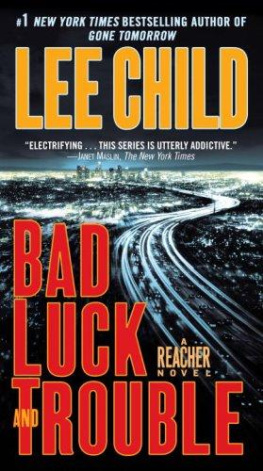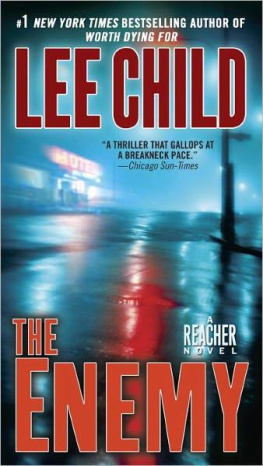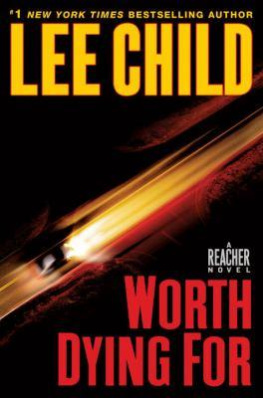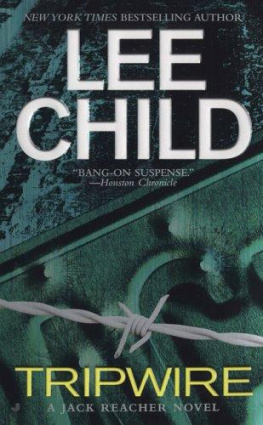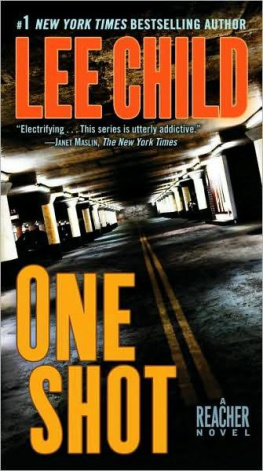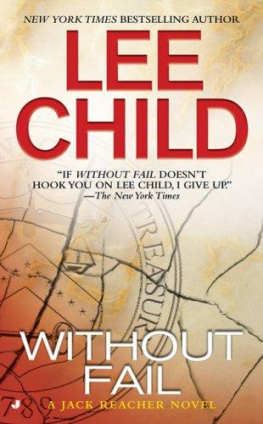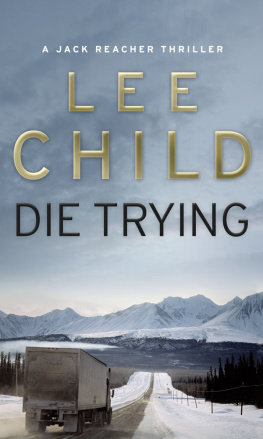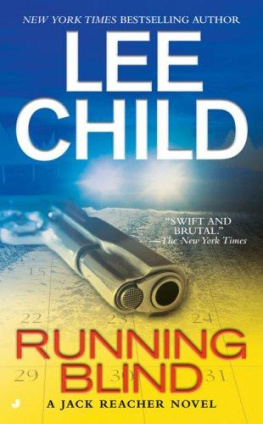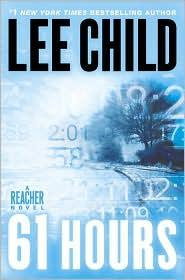
Jack Reacher, 13
SUICIDE BOMBERS ARE EASY TO SPOT. THEY GIVE OUT ALL kinds of tell-tale signs. Mostly because theyre nervous. By definition theyre all first-timers.
Israeli counterintelligence wrote the defensive playbook. They told us what to look for. They used pragmatic observation and psychological insight and came up with a list of behavioural indicators. I learned the list from an Israeli army captain twenty years ago. He swore by it. Therefore I swore by it too, because at the time I was on three weeks detached duty mostly about a yard from his shoulder, in Israel itself, in Jerusalem, on the West Bank, in the Lebanon, sometimes in Syria, sometimes in Jordan, in buses, in stores, on crowded sidewalks. I kept my eyes moving and my mind running free down the bullet points.
Twenty years later I still know the list. And my eyes still move. Pure habit. From another bunch of guys I learned another mantra: Look, dont see, listen, dont hear. The more you engage, the longer you survive.
The list is twelve points long if youre looking at a male suspect. Eleven, if youre looking at a woman. The difference is a fresh shave. Male bombers take off their beards. It helps them blend in. Makes them less suspicious. The result is paler skin on the lower half of the face. No recent exposure to the sun.
But I wasnt interested in shaves.
I was working on the eleven-point list.
I was looking at a woman.
I was riding the subway, in New York City. The 6 train, the Lexington Avenue local, heading uptown, two oclock in the morning. I had gotten on at Bleecker Street from the south end of the platform into a car that was empty except for five people. Subway cars feel small and intimate when theyre full. When theyre empty they feel vast and cavernous and lonely. At night their lights feel hotter and brighter, even though theyre the same lights they use in the day. Theyre all the lights there are. I was sprawled on a two-person bench north of the end doors on the track side of the car. The other five passengers were all south of me on the long bench seats, in profile, side on, far from each other, staring blankly across the width of the car, three on the left and two on the right.
The cars number was 7622. I once rode eight stops on the 6 train next to a crazy person who talked about the car we were in with the same kind of enthusiasm that most men reserve for sports or women. Therefore I knew that car number 7622 was an R142A model, the newest on the New York system, built by Kawasaki in Kobe, Japan, shipped over, trucked to the 207th Street yards, craned on to the tracks, towed down to 180th Street and tested. I knew it could run two hundred thousand miles without major attention. I knew its automated announcement system gave instructions in a mans voice and information in a womans, which was claimed to be a coincidence but was really because the transportation chiefs believed such a division of labour was psychologically compelling. I knew the voices came from Bloomberg TV, but years before Mike became mayor. I knew there were six hundred R142As on the tracks and that each one was a fraction over fifty-one feet long and a little more than eight feet wide. I knew that the no-cab unit like we had been in then and I was in now had been designed to carry a maximum of forty people seated and up to 148 standing. The crazy person had been clear on all that data. I could see for myself that the cars seats were blue plastic, the same shade as a late summer sky or a British air force uniform. I could see that its wall panels were moulded from graffiti-resistant fibreglass. I could see its twin strips of advertisements running away from me where the wall panels met the roof. I could see small cheerful posters touting television shows and language instruction and easy college degrees and major earning opportunities.
I could see a police notice advising me: If you see something, say something.
The nearest passenger to me was a Hispanic woman. She was across the car from me, on my left, forward of the first set of doors, all alone on a bench built for eight, well off centre. She was small, somewhere between thirty and fifty, and she looked very hot and very tired. She had a well-worn supermarket bag looped over her wrist and she was staring across at the empty place opposite with eyes too weary to be seeing much.
Next up was a man on the other side, maybe four feet farther down the car. He was all alone on his own eight-person bench. He could have been from the Balkans, or the Black Sea. Dark hair, lined skin. He was sinewy, worn down by work and weather. He had his feet planted and he was leaning forward with his elbows on his knees. Not asleep, but close to it. Suspended animation, marking time, rocking with the movements of the train. He was about fifty, dressed in clothes far too young for him. Baggy jeans that reached only his calves, and an oversized NBA shirt with a players name on it that I didnt recognize.
Third up was a woman who might have been West African. She was on the left, south of the centre doors. Tired, inert, her black skin made dusty and grey by fatigue and the lights. She was wearing a colourful batik dress with a matching square of cloth tied over her hair. Her eyes were closed. I know New York reasonably well. I call myself a citizen of the world and New York the capital of the world, so I can make sense of the city in the same way that a Brit knows London or a Frenchman knows Paris. Im familiar but not intimate with its habits. But it was an easy guess that any three people like these already seated on a late-night northbound 6 train south of Bleecker were office cleaners heading home from evening shifts around City Hall, or restaurant service workers from Chinatown or Little Italy. They were probably set for Hunts Point in the Bronx, or maybe all the way up to Pelham Bay, ready for short fitful sleeps before more long days.
The fourth and the fifth passengers were different.
The fifth was a man. He was maybe my age, wedged at forty-five degrees on the two-person bench diagonally opposite me, all the way across and down the length of the car. He was dressed casually but not cheaply. Chinos, and a golf shirt. He was awake. His eyes were fixed somewhere in front of him. Their focus changed and narrowed constantly, like lie was alert and speculating. They reminded me of a ballplayers eyes. They had a certain canny, calculating shrewdness in them.
But it was passenger number four that I was looking at.
If you see something, say something.
She was seated on the right side of the car, all alone on the farther eight-person bench, across from and about halfway between the exhausted West African woman and the guy with the ballplayers eyes. She was white and probably in her forties. She was plain. She had black hair, neatly but unstylishly cut and too uniformly dark to be natural. She was dressed all in black. I could see her fairly well. The guy nearest to me on the right was still sitting forward and the V-shaped void between his bent back and the wall of the car made my line of sight uninterrupted except for a forest of stainless steel grab bars.
Not a perfect view, but good enough to ring every bell on the eleven-point list. The bullet headings lit tip like cherries on a Vegas machine.
According to Israeli counterintelligence I was looking at a suicide bomber.
I DISMISSED THE THOUGHT IMMEDIATELY. NOT BECAUSE OF racial profiling. White women are as capable of craziness as anyone else. I dismissed the thought because of tactical implausibility. The timing was wrong. The New York subway would make a fine target for a suicide bombing. The 6 train would be as good as any other and better than most. It stops under Grand Central Terminal. Eight in the morning, six at night, a crowded car, forty seated, 148 standing, wait until the doors open on packed platforms, push the button. A hundred dead, a couple of hundred grievously injured, panic, infrastructure damage, possibly fire, a major transportation hub shut down for days or weeks and maybe never really trusted again. A significant score, for people whose heads work in ways we cant quite understand.
Next page

